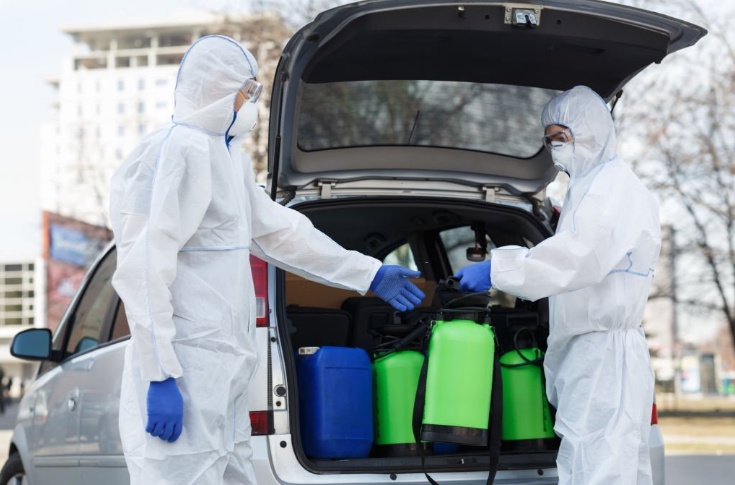Pest infestations can pose significant risks to human health and well-being. As unwanted intruders in our homes and workplaces, pests can carry diseases, contaminate food and water sources, and cause allergies or asthma. It is crucial to understand the impact of these infestations on human health and take proactive measures to address and mitigate the risks they present. In this comprehensive blog, Pest Control Grovedale delve into the various ways pest infestations can affect human health and provide actionable insights to tackle this pressing issue effectively.
Health Risks Associated with Pest Infestations
1Disease Transmission
Pests such as rodents, mosquitoes, and ticks are known carriers of various diseases. For instance, rodents can transmit hantavirus, salmonellosis, and leptospirosis, while mosquitoes are responsible for spreading malaria, dengue fever, and Zika virus. Tick bites can lead to Lyme disease and other tick-borne illnesses. These diseases can have severe consequences on human health, ranging from mild discomfort to life-threatening conditions.
Allergies and Respiratory Issues
Pests like cockroaches, dust mites, and rodents can trigger allergies and exacerbate respiratory problems such as asthma. Their droppings, shed skin, and saliva contain allergenic substances that, when inhaled, can cause allergic reactions. In sensitive individuals, this can lead to symptoms like coughing, wheezing, sneezing, and even severe asthma attacks. Effective pest control measures are essential to minimize these health risks.
Impact on Food Safety and Contamination
Pest infestations pose significant threats to food safety and can lead to contamination. Pests like rodents, insects, and flies can contaminate food products, surfaces, and utensils with their droppings, urine, or saliva. This contamination can introduce harmful bacteria, viruses, and other pathogens into our food supply, leading to foodborne illnesses. It is crucial to maintain proper sanitation and employ pest control strategies to prevent such contamination and protect public health.
Mental and Emotional Well-being
Living or working in an environment infested with pests can have a detrimental effect on mental and emotional well-being. The constant stress, anxiety, and fear associated with pest sightings or infestations can disrupt daily life and impact overall quality of life. Sleep disturbances, increased irritability, and decreased productivity are common consequences. Creating pest-free environments through comprehensive pest management can alleviate these mental and emotional burdens.
Integrated Pest Management: A Holistic Approach
To effectively address the risks posed by pest infestations, it is crucial to adopt an integrated pest management (IPM) approach. IPM focuses on long-term prevention, monitoring, and control strategies to minimize reliance on pesticides while ensuring effective pest management. Key components of IPM include:
Inspection and Identification
Thorough inspection and accurate pest identification are essential steps in devising an effective pest management plan. Identifying the specific pests involved enables targeted control measures and helps determine potential risks to human health.
Prevention and Exclusion
Preventive measures play a vital role in reducing the likelihood of pest infestations. This includes sealing entry points, repairing cracks or gaps, and implementing proper sanitation practices. By denying pests access to food, water, and shelter, the risk of infestation can be significantly minimized.
Monitoring and Early Detection
Regular monitoring and early detection of pest activity are critical to proactive pest management. This can involve the use of traps, surveillance techniques, or trained professionals to identify signs of infestation before they escalate. Early intervention helps prevent health risks and minimizes the need for extensive control measures.
Targeted Treatment and Control
When pest populations exceed acceptable levels despite preventive measures, targeted treatment and control become necessary. This may involve the judicious use of pesticides, employing non-chemical control methods, or implementing biological control agents. The selection of appropriate control measures should prioritize human health and environmental safety.
Education and Awareness
Raising awareness among individuals and communities about pest prevention and management is paramount. Providing educational resources, training programs, and clear guidelines empowers people to take proactive measures and make informed decisions regarding pest control. Education is a key component in achieving long-term pest management success.
Conclusion
Pest infestations have a profound impact on human health, ranging from disease transmission and allergies to food contamination and mental well-being. Addressing these risks requires a comprehensive approach that prioritizes prevention, early detection, and effective control measures. By adopting integrated pest management strategies, we can create healthier and safer environments for ourselves and future generations.


No comments yet